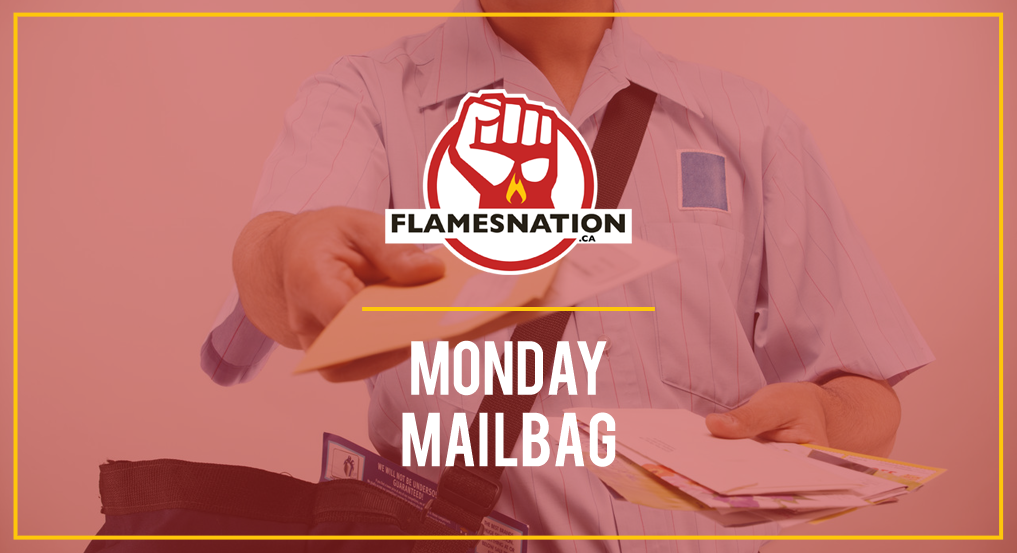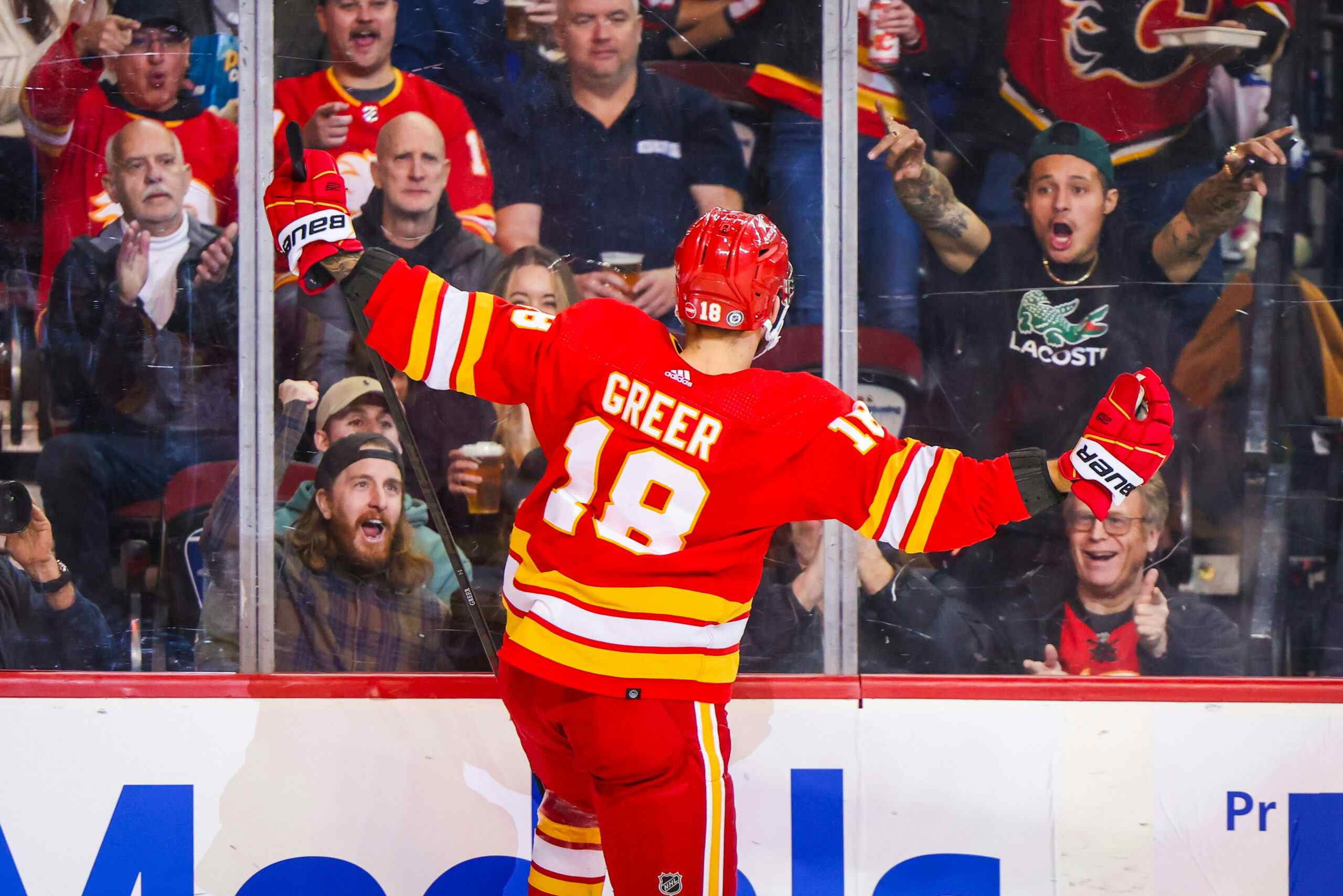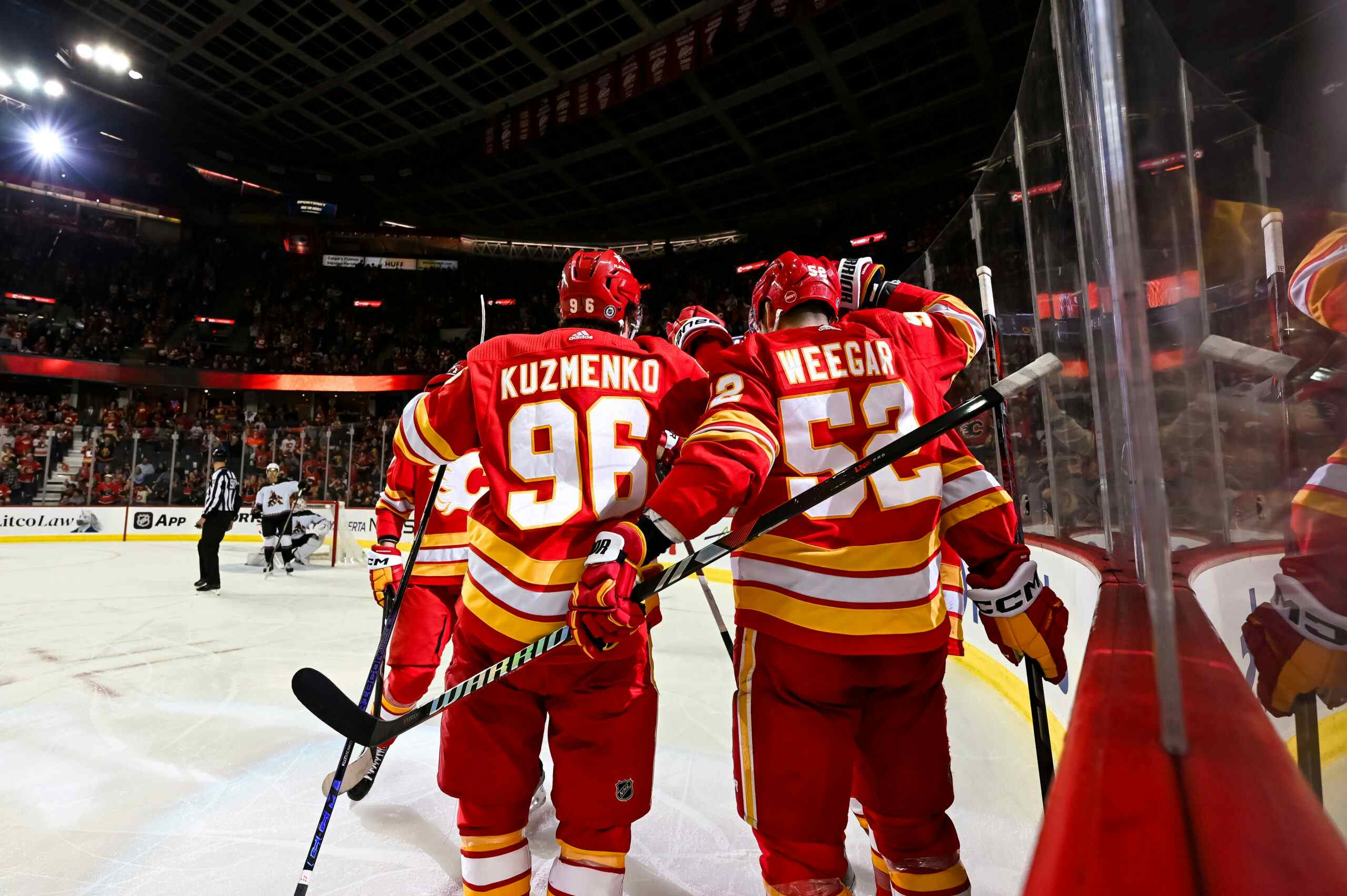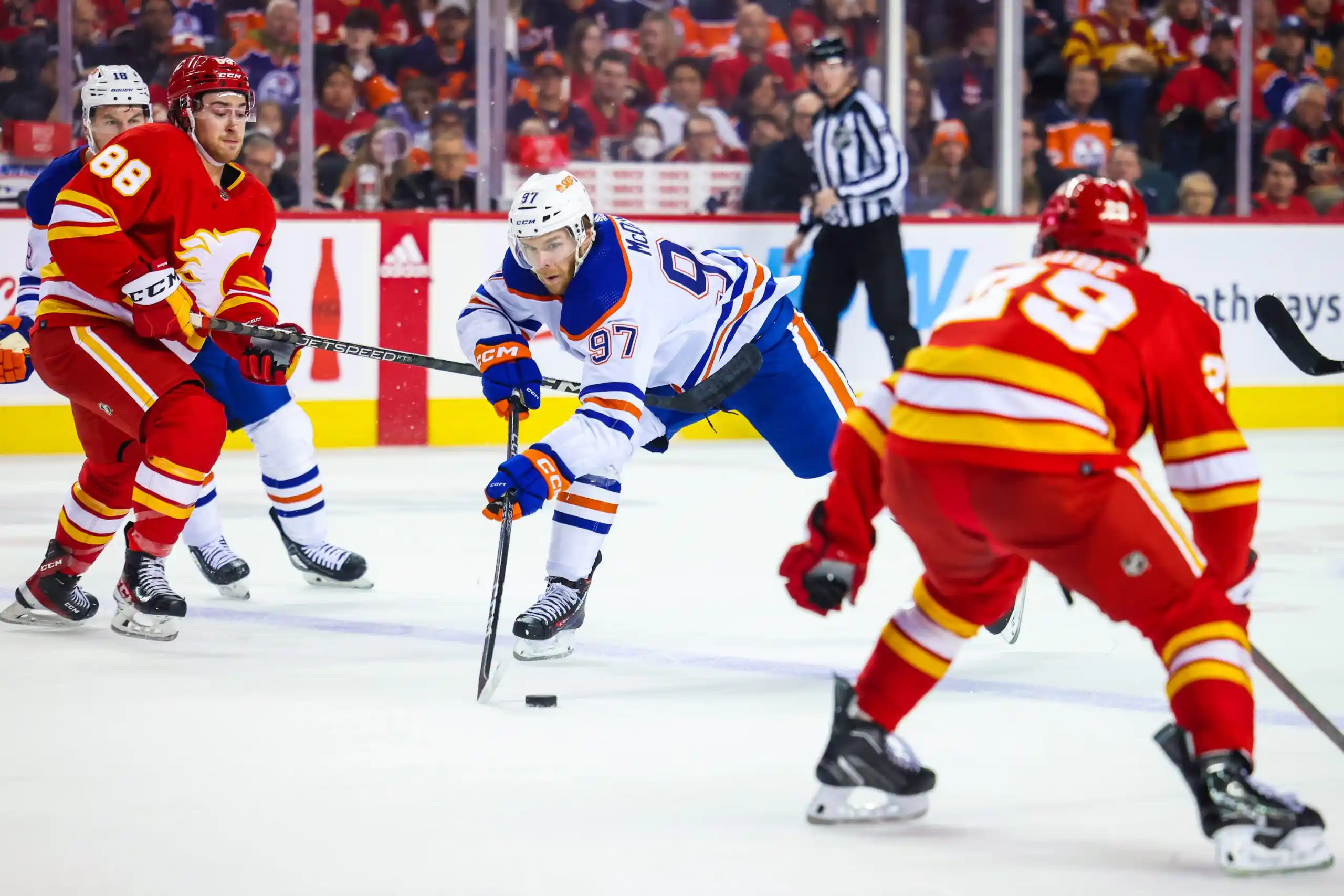FlamesNation Mailbag: Looking at the grand plans

The Flames, for the time being, are a top three NHL team. That puts a target on their backs. With a Pacific Division that is becoming more and more competitive thanks to some sudden winning habits (it’s not just us anymore!), how can the Flames get even better? Do they have to make a few trades? Can they? Will they rely on internal solutions? All this and more.
Brad Treliving has been bullish with his high profile RFAs (ex: Sean Monahan and Noah Hanifin were signed in August, Johnny Gaudreau on the eve of the season), so it’s likely he’s willing to drag this thing out to keep costs low, as that is a working strategy. I think it’s safe to predict that Treliving and Matthew Tkachuk will metaphorically stare each other down this summer, and we won’t see a resolution until late into the offseason. It’s a stressful exercise, but if it keeps costs down, Treliving is going to dive head-first into it.
However, the Flames should certainly be talking right now, as Tkachuk’s play is driving costs up. Imagine if he goes to an all-star game (feasible), has a great playoff performance (also feasible), or even gets some award love (again, feasible). Now imagine if that’s an “and” and not an “or.” Tkachuk is going to get more and more recognition as one of the Flames’ elite players around the league, and that’s going to put more pressure on Treliving to capitulate or face a William Nylander holdout situation. If I were Treliving, I would probably start negotiating right about now.
As for the dollar figure? I would imagine somewhere between $7M and $8M is going to be the final number. How they’ll afford it is another question.
I can’t see the Flames really going for an impactful rental player. The cost is too high and the room so small to fit one in provided someone takes an albatross contract away from you, which is unlikely. I can’t see them going for forward depth either given how much immediate help they have tucked away in the AHL.
Veteran defensive depth might be an area they do target though. It’s all well and good that the Flames can have Oliver Kylington, Juuso Valimaki, and Rasmus Andersson play meaningful NHL minutes, but the value of playoff experience (it’s mostly perceived – remember that they signed Troy Brouwer partially for his playoff experience and likely targeted James Neal for the same reason) is going to weigh heavily on their minds. If Michael Stone is healthy by that time they will likely stick him in the lineup, but they might just gun for one more experienced vet at the deadline for safety (if they really think that Dalton Prout can be trusted in the playoffs, hoo boy).
Bending Corners writes:
It looks to me as though the Flames offensively play a very helter-skelter style. Passes aren’t tape-to-tape, they are “in the vicinity” and the receiver has to rely on quick reflexes to corral the puck and continue the play. Maybe this is why James Neal looks so ineffective? His reflexes aren’t quick enough? Perhaps he could still score 20 goals on a team that played a different style with tighter puck control – Detroit, LA, etc. What do you think?
I’m not sure that the passing structure is the issue: I will agree that passes aren’t always necessarily clean, and that when the Flames struggle with passing it’s extremely obvious, but I think to say that one of the highest scoring teams is being hampered by their passing is a stretch. If everyone else can succeed with that structure besides Neal, I don’t think the problem is the structure.
I think a lot of Neal’s struggles this year is that he’s away from the main playmakers. Neal has always been renowned for his wicked shot, which absolutely requires some perfect setups to become the automatic goals he’s known for. With guys like Sidney Crosby, Evgeni Malkin, and Ryan Johansen, that’s no problem. I think Derek Ryan is a swell guy, but he is not any of those players, and definitely not in the vicinity. Maybe an extended spin with Mikael Backlund might be a cure for what ails Neal (it usually works with other players).
The RW spot on the second line is the only one with an actual opening that hasn’t been solved. I think Sam Bennett has been doing fine there, but he hasn’t been a legitimate difference maker. If you want to spread out scoring, putting a bonafide finisher with great playmakers is a good recipe. It really can’t hurt to try.
I’m of two minds about it. First off, Alan Quine has been a fine story for the time being. If we’re talking about merit, he absolutely should stay until the players he’s subbing in for prove that they deserve the spot. If he works, he works. Although it seems unbelievable, there’s going to be a day where the top two lines aren’t going to be pure dynamite. If your 4C (really the 5C when everyone’s healthy) is scoring goals, why complain.
My better hockey sense is telling me that Quine was in the AHL for a very good reason. Prior to this productive stint, he’s had 84 games where he has been a borderline NHL player. Like many other once exciting reclamation projects, the larger sample outweighs the the smaller one. Remember when Curtis Lazar first joined the team and picked up three points in his first four games? That’s more likely to happen to Quine rather than him becoming a regular 20-30 point scorer this season.
So we’ll see. If he can stay at the NHL level, good for him. But until he proves that he can, the most likely outcome is that he becomes quieter and quieter until he’s shuffled back off to the AHL.
Speaking of. I think the answer is a firm no.
The Flames know what Lazar is, and he’s a player who is pretty bad at the NHL level. The rest of the Stockton Heat may not be that much better, but it can’t hurt to find out if they’re a diamond in the rough. Lazar was a bad player on a mediocre team last season; he’s not going to be a better player on a vastly improved team this season.
I think that Lazar is not coming back, regardless of whether or not Kerby Rychel or Quine stick. I feel both of them got the call for their superb AHL performances, which have eclipsed Lazar’s. Perhaps they have the mystery box factor working in their favour (we know what Lazar is, but Rychel or Quine could be anything!), but the likely answer is that they’re just better players. I would probably go as far as saying that they might try Tyler Graovac before going back to Lazar. If that fails, they might try Dillon Dube or Andrew Mangiapane.
Your eyes do not deceive you.
It’s hard to compare across years and coaches, but the Purple Reign line allows 49.18 CA/60 at 5v5 with a 60.28 OZS%. For comparison, the top line with Micheal Ferland last year allowed 56.37 CA/60 with 58.94 OZS%. They haven’t sacrificed that much offence either, having only dropped one CF event per hour from last season (64.66 vs 65.56 CF/60).
Is that purely attributable to Elias? Likely. Lindholm away from both Monahan and Gaudreau rocks a pretty good 52.33 CA/60 (albeit he has only been away from them for 55 minutes of 5v5 time – just over 90 seconds per game). This season, Monahan and Gaudreau away from Lindholm jump to a bad 62.66 CA/60, though the same caveats apply (they only spend around three 5v5 minutes per game away from Lindholm – 100 in total). The impact is pretty big, which seems to suggest Lindholm is the driving factor behind that line looking better defensively.
The more I think about it, the less of an impact I think either Kylington or Valimaki makes on the club’s plans for next season.
I don’t think the dichotomy of Kylington/Valimaki is a real one. They’re both developing players: the one who sticks is not going to be miles ahead of the other one at season’s end, and the one who goes to the AHL is not going to catch up in the same time frame. One is 20, and the other 21. They both have a few years to go before they reach their potential. If they need more AHL time, that’s fine. If that’s going to happen this year and next year, that’s also fine.
I don’t think either will be forcing highly-esteemed NHL vets out of top positions by next year, which makes life comfortable for TJ Brodie and Travis Hamonic. They’ll get the spotlights to audition for their final contracts. If I had to pick one for the Flames to re-sign, I think it might be Hamonic over Brodie. Both players are heading into their 30s when their current contracts are up, so they’re definitely looking for big money. While Brodie might take a hometown discount for the team that drafted and developed him, I think he might entertain offers in the $7M+ from desperate teams. It’s too far out to project what the market will look like then, but someone is going to give him big bucks.
Hamonic is a quieter figure and will likely make less than that, which could keep him with the Flames. Being an actual righty might push the team closer towards him too, and perhaps the feeling that they need to wring all possible value out of him given the price they paid could also play in. Again, hard to gauge the market years away, but it’s also possible that Hamonic stays for a shade under $5M.
Recent articles from christian tiberi





